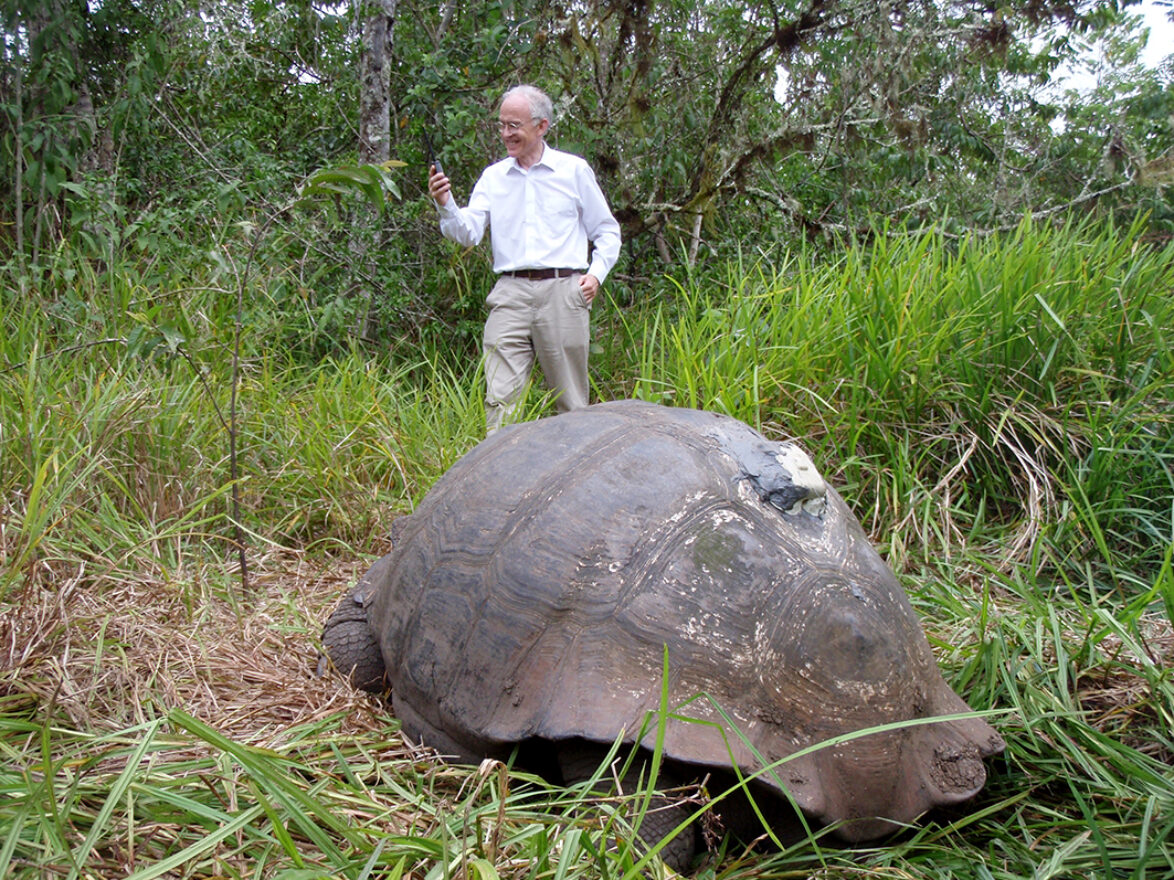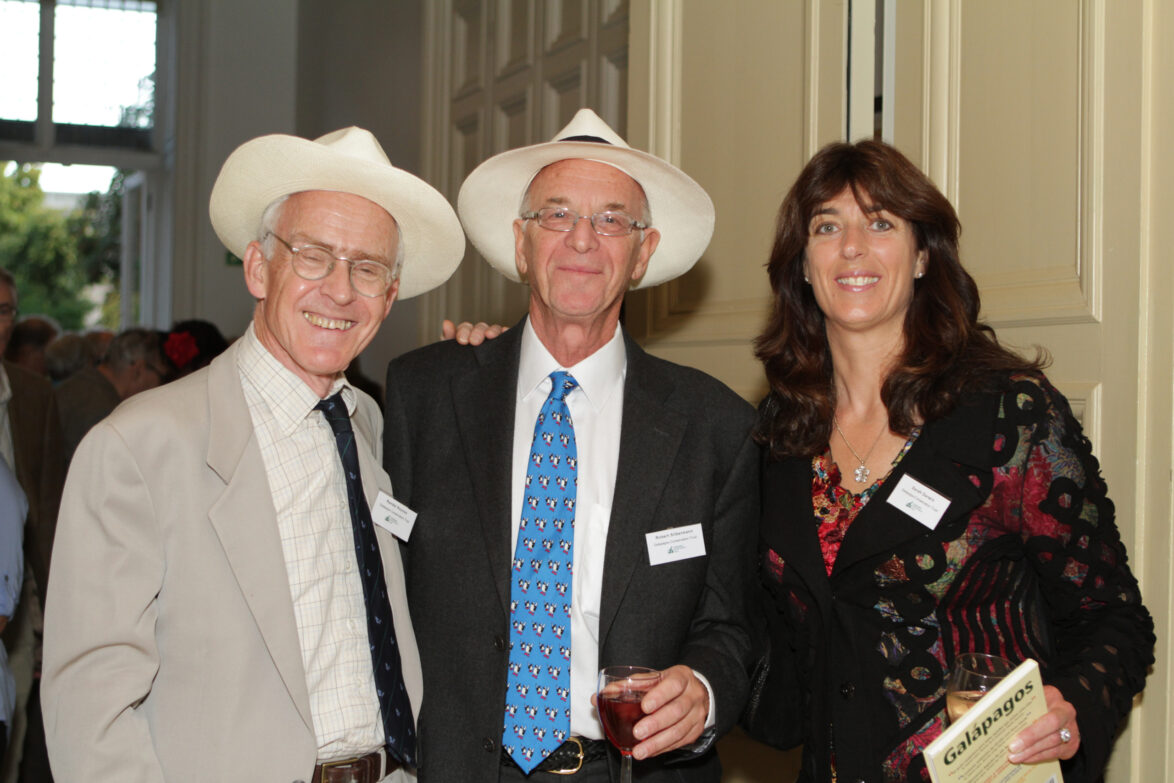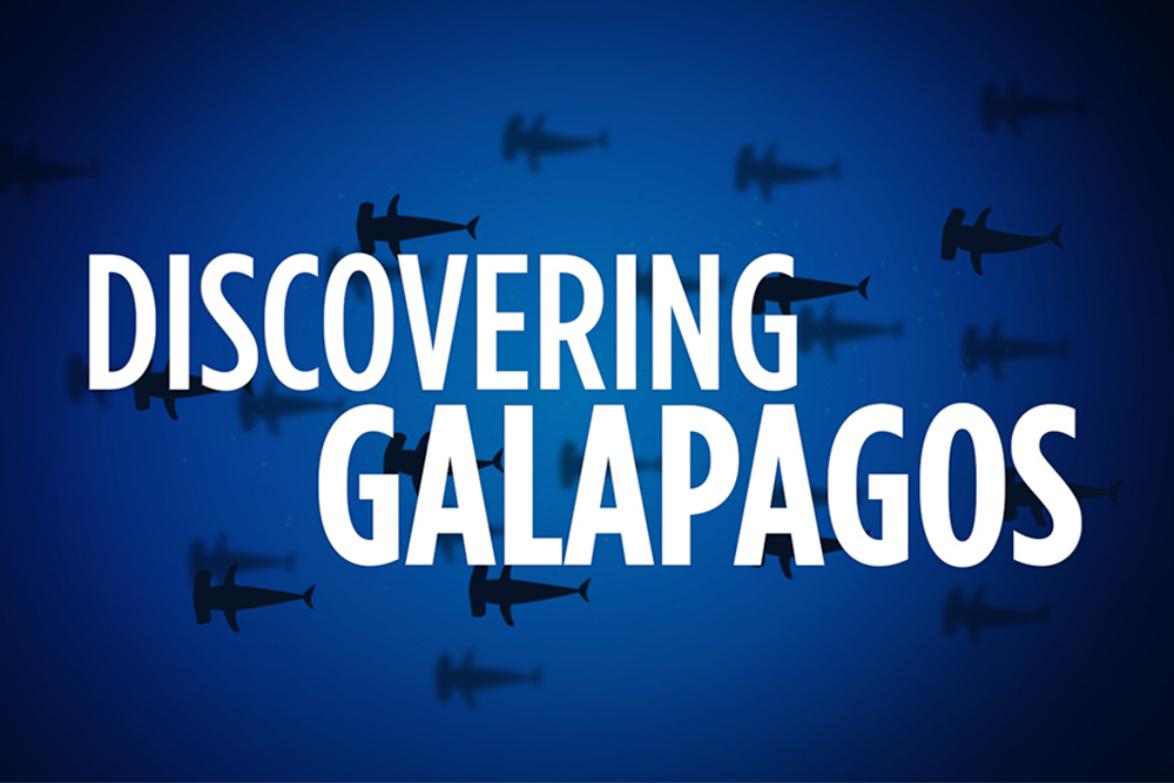
Remembering Randal Keynes
In March 2023 we lost a very special member of our Galapagos community, Randal Keynes OBE.
A shining advocate for conservation, Randal’s legacy in Galapagos lives on through the decades of support he generously gave, particularly to GCT and the Charles Darwin Foundation.
I first met Randal in 2011. A smiling, unassuming gentleman keen to share his knowledge and stories, he was already a stalwart for GCT and someone high on my list of ‘Galapagos All Stars’ to meet when I first started. A skilled raconteur, Randal delighted in telling little known stories about Charles Darwin, his great great grandfather and object of much dedicated study. One of his main missions was to humanise Darwin and increase relatability with the general public, moving away from the image of the old, bearded sombre scientist to a real person (who was young once!) with many facets. I remember the twinkle in Randal’s eye as he spoke about the drawings Darwin kept that were done by his young children, littered amongst his copious scientific notes, and how he made a slide for them in his home at Down House. How he was fascinated by earthworms and pigeons and barnacles.

A skilled raconteur, Randal delighted in telling little known stories about Charles Darwin, his great great grandfather and object of much dedicated study.
Replicating some of Darwin’s experiments to supplement learning was a big element of Randal’s pioneering education work, another of his passions through the Charles Darwin Trust, aiming to promote ‘Darwin-inspired learning’ – highlighting the value of taking the time to truly observe, record and reflect in nature. Randal was very influential in the development of GCT’s Discovering Galapagos educational websites and a big supporter of getting local children out to connect with nature, benefitting from the same wonderful wild experience that many tourists get from visiting the Islands. He was also enormously happy for me that I was able to visit Galapagos for the first time at the same age that Darwin did, thankfully not insinuating that I would necessarily have to come back with the beginnings of a groundbreaking theory that redefines the very perception of the human role in the natural ecosystem.
As you would expect, Randal was a stickler for getting the details right on how Darwin’s famous theory transpired, and I am forever grateful for hearing these details and visiting places together such as the Linnaean Society, Down House and Cambridge Botanical Gardens, where I learned that not only were the Galápagos mockingbirds more important for triggering Darwin’s theory development than the famous finches, but that it was actually the plants collected during the voyage of the Beagle that gave a lot of insight into the adaptive variation between the Islands thanks to the work of Joseph Hooker. The way Randal helped me to see Darwin through a different lens has carried over to how I see all kinds of historical figures that have often been immortalised as a narrow snapshot of who that person was and what they stood for.

One Galapagos conservation project that Randal was particularly passionate about was the restoration of Floreana island and particularly the plight of the Floreana mockingbird. There are only a few hundred of these birds left in the world, clinging on to a tiny amount of habitat on two islets off the coast of Floreana, extinct on the main island due to habitat loss and predation by invasive species including rats and feral cats. Randal gave a lot of his time and effort to support preparations for this over the last two decades and we hope that within the next decade we will get to a point where we will see these birds back on their home island. On that day, there will be many of us thinking of Randal.


